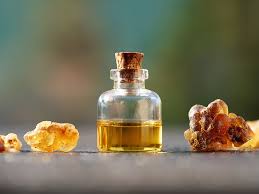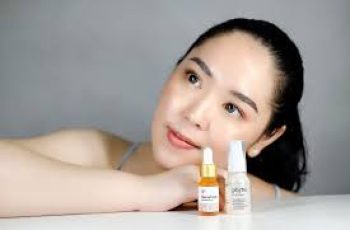
Frankincense Uses and Benefits
Frankincense is a resin or essential oil (concentrated plant extract) that has long been used as an incense, perfume, and medicinal product.
It is extracted from the Boswellia serrata tree, which still plays an important role in the Roman Catholic and Eastern Orthodox Churches.
It can be used for aromatherapy, skin care, pain relief, and more. 12
In traditional Indian medicine, frankincense is used to treat gastrointestinal conditions such as diarrhea and vomiting. It is also used to treat arthritis, asthma, and various skin diseases.
In Western medicine, research on the uses and benefits of frankincense remains relatively limited. 2
Frankincense is native to Yemen, Oman, India, and Pakistan, and is collected primarily from nurseries in East Africa and parts of the Arabian Peninsula.
In some areas, frankincense trees are endangered due to insect infestations, livestock grazing, fires, and habitat loss. As a result, frankincense can sometimes be expensive.
Applications and Benefits
There is widespread interest in using frankincense to treat a variety of conditions, and preliminary research shows promise. However, meaningful research results have yet to be obtained.
Further research, especially in humans, is needed before experts can recommend the use of frankincense for certain conditions.
Some preliminary findings on the potential benefits of frankincense:
May ease symptoms of osteoarthritis (OA): Some studies show that frankincense is more effective than a placebo at improving mobility and relieving knee pain in people with osteoarthritis.
May ease pain in people with rheumatoid arthritis (RA): One study found that applying a cream containing frankincense and several other ingredients relieved joint pain and swelling.
However, because frankincense has been studied in combination with other ingredients, its actual benefits for RA are unclear.
May ease lower back pain: A small study found that applying frankincense and myrrh essential oils during massage reduced back pain in study participants compared with using a placebo.
May fight skin aging: Researchers found that a cream containing boswellic acids improved skin texture and reduced fine lines.
May ease symptoms of radiation therapy:
Research shows that people who received radiation therapy for breast cancer experienced less erythema (a type of rash) when they applied a frankincense cream twice daily during treatment.
However, the study was funded by the cream’s manufacturer and could be biased.
Interesting Facts About Boswellic Acids
Boswellic acids are considered by many to be the therapeutic component of frankincense, but they are not found in essential oils.
They are only found in frankincense resins, sticky semisolid compounds, and specially prepared extracts.
Applications
Essential oils like frankincense are highly concentrated, so only a small amount is needed for most uses.
You can use frankincense in a diffuser, add it to a bath, or mix it with other ingredients to make a skin cream.
Follow the manufacturer’s dosage instructions. Generally, just add a few drops of incense to the water in a diffuser to fill your room with an earthy scent.
Incense is said to improve mood, enhance intuition, and improve focus. You can also mix it with water to make a room spray with the same effects.
For topical use, dilute a few drops of frankincense in a carrier oil such as olive, jojoba, or coconut oil before applying to the skin.
Some people use it with other ingredients or oils to create a facial serum. You can also add a drop or two to shampoo to promote scalp health or a few drops to a warm bath to promote relaxation. Always test frankincense products on a small area before applying them to your skin. 6
Some people use frankincense to make homemade cleaning products because it has antibacterial properties. 6
Safety and Side Effects
Frankincense is generally considered safe for topical or aromatherapy use and has no significant side effects. However, it may cause skin irritation. 3
While frankincense rarely causes skin irritation, rashes, and itching, there have been reports of it causing dermatitis and other rashes.
For example, one person developed dermatitis after burning incense on a pillow. In another case, a person developed a rash after applying frankincense cream. 3
If you want to use frankincense, you should test it on a small area of skin first. Apply one to two drops mixed with a carrier oil to the same area twice a day for 7-10 days.
(See the manufacturer’s instructions for dosage.) Also, choose an area where the product will not be washed off, such as the crook of your elbow. 7
If there is no reaction after this testing phase, it is probably safe to use – but always check with your doctor first.
If you do react to frankincense, wash the affected area carefully and do not apply it to your skin again. To ease the discomfort, you can use a cold compress or petroleum jelly.
If your symptoms don’t improve or the reaction worsens, consult a doctor, such as a dermatologist. 7
Ingesting frankincense may affect the effectiveness of certain prescription medications, such as immunosuppressants and statins.
8 Experts also advise against using frankincense during chemotherapy because of the potential for drug interactions.
If you want to use frankincense and are currently taking medication or have a chronic condition, talk to your doctor first. 5
Incense Selection
When looking for frankincense, it’s important to note that there is no regulatory agency for essential oil production.
Although companies use terms like “therapeutic grade” or “pure,” no authority certifies their use, and they are not an indicator of product quality. 9
The U.S. Food and Drug Administration (FDA) regulates essential oils differently than prescription drugs.
However, the FDA can remove a product from the market if a manufacturer’s claims are false or if the product is deemed unsafe. 10
Although some studies have shown that essential oils like frankincense may help reduce inflammation or relieve pain, more research is needed before manufacturers can make these claims.
If companies try to sell essential oils as medicines or claim they can relieve certain symptoms, the FDA and the Federal Trade Commission can take action. 10
Here are some tips for identifying high-quality incense products:9
Check the ingredient list to make sure the essential oil contains only frankincense and nothing else.
Ideally, the manufacturer will only list frankincense and its Latin name (Boswellia) on the label.
The oil should be shipped in an amber bottle to preserve its integrity.
Always check that the manufacturer states the source and extraction method of the oil.
Smell the oil before buying to make sure you are not buying a rancid product.
You may need to try several products to find an oil you like and that works. An aromatherapist or naturopath can also advise you.
If you want to use frankincense as a supplement to traditional medicine, consult your doctor, especially since it may interact with existing medications.
Brief Overview
Frankincense is extracted from the Boswellia tree and is primarily used as an essential oil, but it can also be used in resin form.
It is used in religious ceremonies, as a perfume, and to relieve illness. Some studies have shown that it can relieve arthritis symptoms, reduce back pain, and slow skin aging.
Although researchers are interested in frankincense’s potential antibacterial and anti-inflammatory properties, most current studies have been conducted in vitro or on animals.
Therefore, experts generally do not recommend using frankincense to treat medical conditions. If you want to use frankincense, it’s best to talk to your doctor first.
This can help you determine if it’s right for you.


